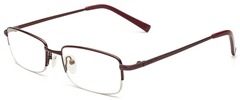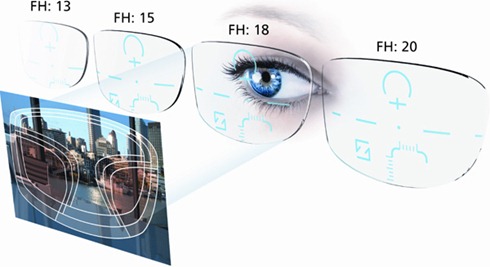Presbyopia: my eyes are getting old. Well, the rest of me too!
Posted By RichC on November 10, 2012
I had an eye appointment this week and decided to mention that reading, particularly in the evening, was becoming more of a challenge.  I’ve been trying to fool myself into thinking that it was the lousy CFLs next to my chair or the added eyestrain of using computers, tablets and cellphones during the day, but we all know that its my aging eyes or in medical terms, presbyopia.
I’ve been trying to fool myself into thinking that it was the lousy CFLs next to my chair or the added eyestrain of using computers, tablets and cellphones during the day, but we all know that its my aging eyes or in medical terms, presbyopia.
Currently, I’ve been doctoring myself with drugstore readers and a pair of computer bifocals that I ordered online, but the eye doctor thinks I’d be happier with a pair of glasses matched to my prescription. So with that in mind, I’ve decided a pair of glasses with free-form backside-progressive lenses (digital) in polycarbonate … with the hope there is less distortion towards the edges and a stronger safety lens for working with tools, etc (although I don’t think they will truly double as shielded safety glasses)?
Any thoughts regarding the digital progressive lenses from those of you with glasses? Are they more hype that helpful in reducing distortion?
The Advantages of Free Form Progressive Lenses
The debut of digital processing and the ability to create “free form” lenses has enabled optometrists to craft lenses that better suit the needs of the user while minimizing the distortion inherent in progressive lens designs. These free-form lenses are made using a three-axis, computer numerically controlled (CNC) generator to carve a complex surface that looks something like a 3-D topographical map. In addition, lenses made this way have a resolution up to six times greater than traditional progressive lenses.
A recent study performed at the University of California, Berkeley supported the benefits of the free-form lenses, including “statistically significant preferences for the optically customized free-form lenses over the non-free-form lenses.” The study also found that subjects “reported a wider field of undistorted vision when looking through the reading zone of the test spectacles.” Unsurprisingly, the study found that consumers prefer the lenses over conventional progressive lenses, that they were able to adapt faster to the lenses, and that they reported a wider near-vision zone.
This last point is becoming increasingly important as a growing share of the population is spending a sizable amount of time looking at objects in the near-to-intermediate visual zone, such as iPads, Kindles, smartphones, computers, and the like. This has contributed to the demand from users to widen the intermediate zone in the progressive lens. Most design companies report that one of the major things that users don’t like about progressives is the fact that the intermediate zone in the lenses is too narrow. Using digital processing, however, it can be made wider than it has been traditionally.

Comments